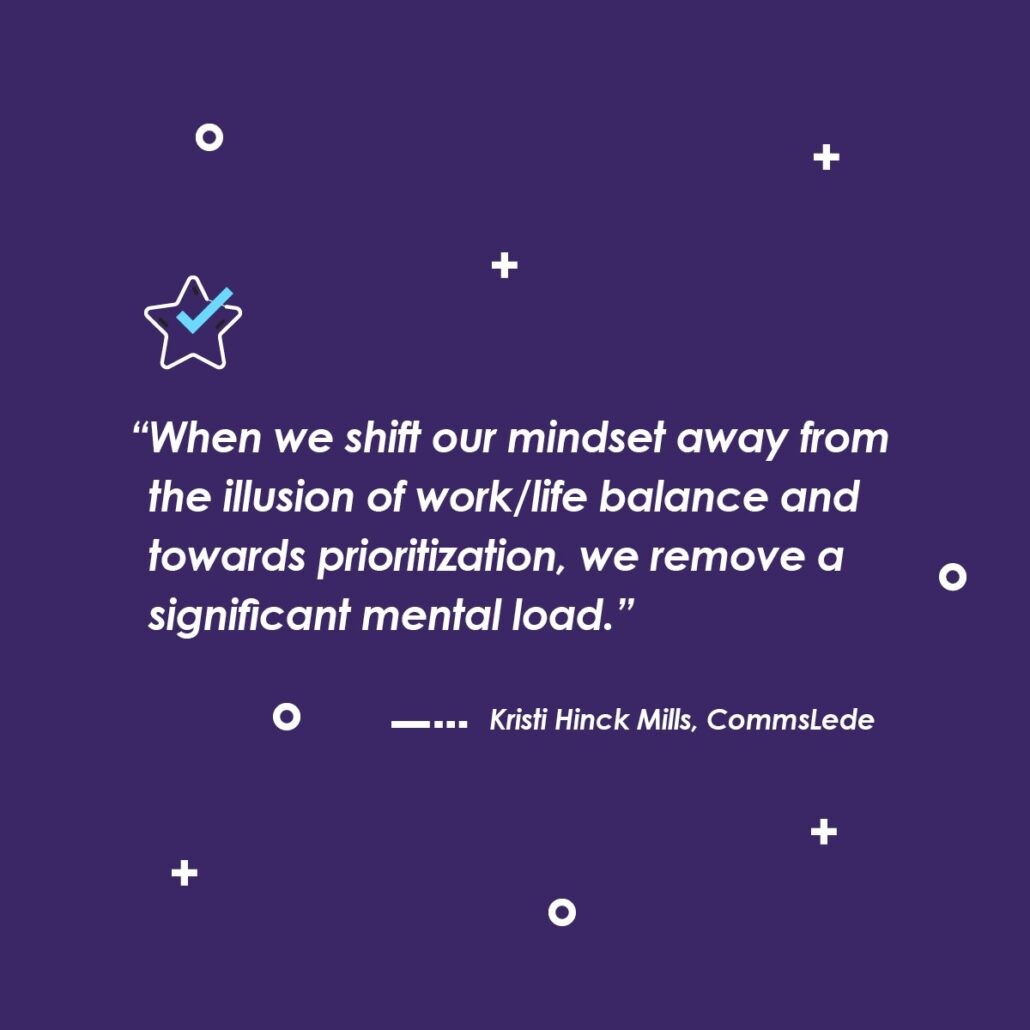
I don’t think I’m exaggerating when I say one of the most dangerous cultural phrases that came out of the 1980s is the term, “work/life balance.” The first published appearance of the term in the United States (initially articulated as “work-and-life balance”) was in Industry Week on November 10, 1986. While not necessarily a novel idea, the concept gained significant traction in the back half of the decade as more women entered the workforce.
Flash-forward to today, when the term – and its step-siblings (work/life integration and work/life flexibility) – are a therapist’s dream … and an executive coach’s nightmare.
Why?
There’s no such thing as work/life balance, folks. Integration isn’t always seamless or straightforward, and flexibility is only as flexible as organizational policies allow. And what’s worse, as individuals, we have very little control when it comes to this reality. At best, we’re chasing a moving target. At worst, we’re victims of our own frustration and self-doubt.
I can’t count the number of overwhelmed clients who have asked me what they’re “doing wrong” when it comes to work/life balance.
That’s why, as an executive coach, I’d rather reframe the conversation around something we all can do something about: priorities.
The Value of Abandoning the “Balance” Framework
When we prioritize our activity (see my Values post for more on this), we take ownership of our journey. We create stability for ourselves and our teams. We can be better leaders by committing to specific work and can track, measure, and share our results. We can also earn our business partners’ trust, since we have space to provide expert guidance and consult with focus, attention, and creativity.
On the mental well-being side, prioritization can help us feel more accomplished, more valued, and more present, since we have clear goals and targets. Prioritization can also head off the general sense of anxiety and overwhelm that’s often a direct result of unfocused churning and burning.
It’s Not Just You
Abandoning the quixotic pursuit of “balance” is hard, since the term is engrained in our cultural lexicon.
One client shared, “When I look around, it feels like everyone else has work/life balance figured out. My peers are taking classes, planning vacations, training for marathons and making charcuterie boards. I must not be good at balancing things if I can’t even leave my desk for lunch.”
Instead of looking at things through a “balance” lens, I suggested she revisit her work priorities. I asked her:
- What work is most valued by her manager or business partners?
- What work is being tracked and measured?
- Is there any work that you/your team uniquely performs?
- Are deadlines arbitrary or fixed?
- Do you have the ability to move or influence any “fixed” deadlines?
- Can you make a prioritized list of your team’s work today, and align on that list with your manager?
- How do you respond to non-priority work requests?
- What boundaries can you set to prevent other work from creeping into the new space you created for yourself and your team?
- What activities will you commit to doing for yourself in the space you’ll create?
Once my client had clear priorities and boundaries and abandoned the “balance” concept, her anxiety and self-doubt settled considerably. She also came to conversations more focused, more polished, and her manager reported increased confidence in both her day-to-day performance and her potential to grow and develop in the future.
When we shift our mindset away from the illusion of work/life balance and towards prioritization, we remove a significant mental load, and empower ourselves to create a healthier work environment – both for ourselves and our teams.
With more than two decades of communications experience spanning agencies, Fortune-100 organizations, non-profits and academia, Kristi Hinck Mills brings her passion for employee communications to CommsLede Consulting, where she delivers strategic solutions and executive coaching for her clients. Visit the CommsLede blog for more tips.



